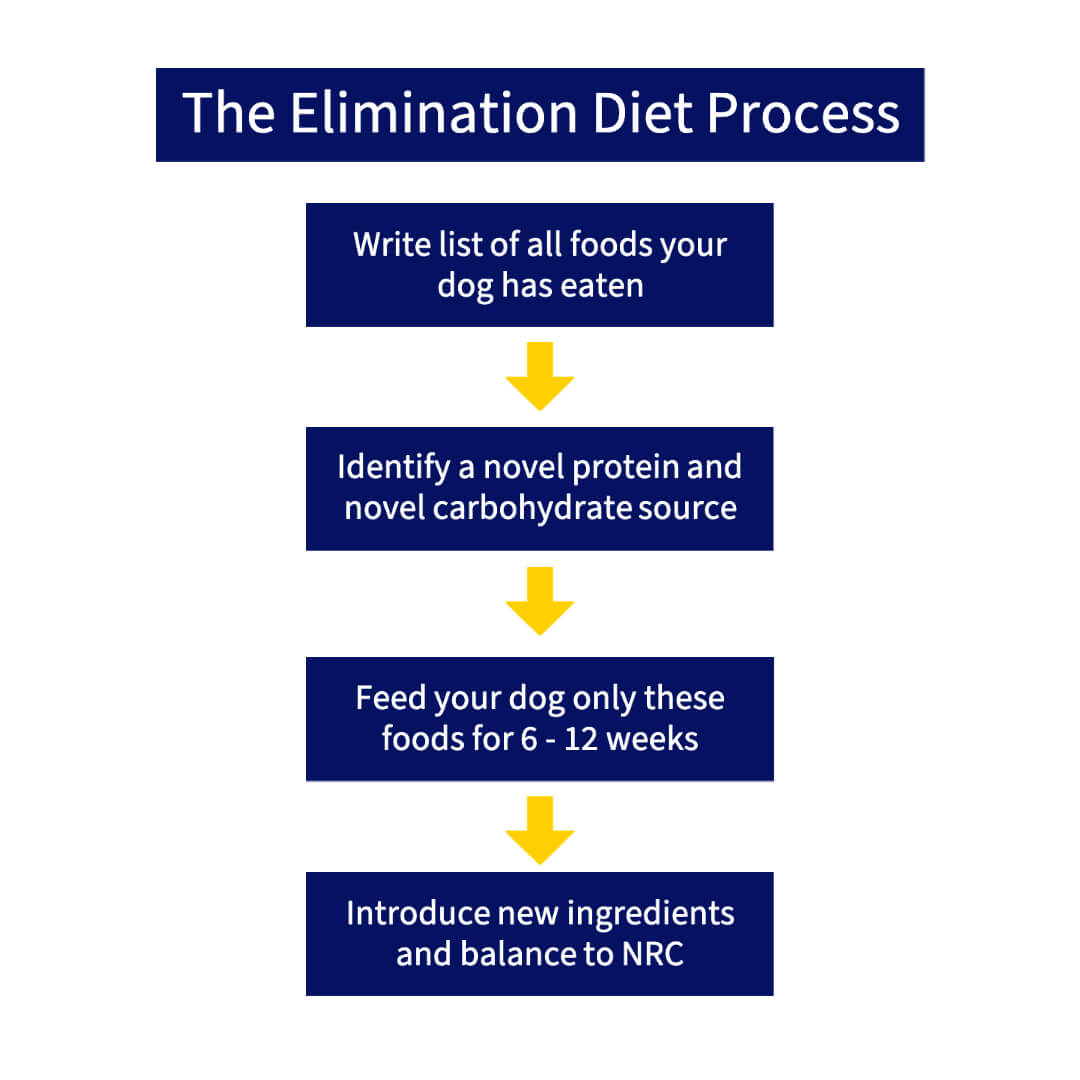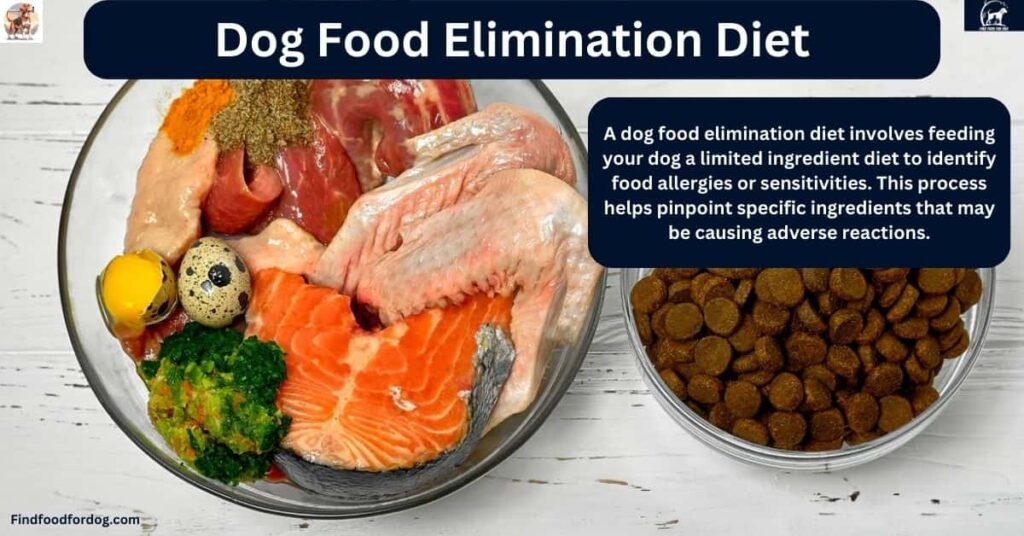A dog food elimination diet involves feeding your dog a limited ingredient diet to identify food allergies or sensitivities. This process helps pinpoint specific ingredients that may be causing adverse reactions.
Many pet owners face challenges with their dogs suffering from allergies or gastrointestinal issues. An elimination diet serves as a systematic approach to identify problematic ingredients in your dog’s food. By providing a single protein source and a unique carbohydrate, you can observe your dog’s reactions over time.
This method not only helps in diagnosing allergies but also promotes better overall health. Choosing the right ingredients is crucial, as even small amounts of allergens can affect your dog’s well-being. Understanding this process can lead to a happier, healthier pet.
Introduction To Elimination Diets
Elimination diets help identify food allergies in dogs. These diets remove certain ingredients. This process allows you to monitor your dog's health. Understanding elimination diets can improve your dog's life.
What Is An Elimination Diet?
An elimination diet is a special feeding plan. It involves the following steps:
- Remove common allergens from your dog's food.
- Feed a limited ingredient diet for several weeks.
- Gradually reintroduce one ingredient at a time.
This method helps pinpoint which foods trigger allergies or sensitivities. Common allergens include:
- Beef
- Chicken
- Dairy
- Wheat
- Eggs
Benefits For Your Dog's Health
Elimination diets offer many benefits for your dog's health:
| Benefit | Description |
|---|---|
| Identifies Allergies | Finds specific food triggers for your dog. |
| Improves Digestion | Reduces upset stomach or gas issues. |
| Enhances Coat Quality | Leads to a shinier and healthier coat. |
| Boosts Energy Levels | Promotes overall vitality and activity. |
Following an elimination diet can change your dog's life. Healthier dogs are happier companions. Monitor your dog's reactions closely during the process.
Identifying Food Sensitivities
Identifying food sensitivities in dogs is crucial for their health. Many dogs suffer from food allergies. An elimination diet can help pinpoint the problem. This process requires patience and careful observation.
Common Symptoms Of Food Allergies In Dogs
Food allergies can show up in various ways. Understanding the symptoms helps in early detection. Here are some common signs:
- Itchy Skin: Dogs may scratch more than usual.
- Ear Infections: Frequent ear infections can signal allergies.
- Digestive Issues: Vomiting or diarrhea often occurs.
- Swollen Face: Look for swelling around the eyes or muzzle.
- Excessive Licking: Dogs may lick their paws or body frequently.
The Importance Of Veterinary Guidance
Consulting a veterinarian is essential before starting an elimination diet. They provide valuable insights and ensure safety. A vet can help you choose the right foods. They can also monitor your dog's progress.
Here are reasons why veterinary guidance is important:
| Reason | Description |
|---|---|
| Safe Food Selection | Vets recommend safe food options for your dog. |
| Monitoring Health | Vets track your dog's health during the diet. |
| Identifying Triggers | They help identify specific food triggers. |
| Long-term Management | Vets assist in creating long-term dietary plans. |
Always follow your vet's advice for the best outcomes.
Planning The Elimination Diet
Planning an elimination diet for your dog is crucial. This process helps identify food allergies or sensitivities. A well-structured plan ensures effectiveness and minimizes complications.
Selecting The Right Ingredients
Choosing ingredients is key to a successful elimination diet. Focus on novel proteins and carbohydrates. Here are some options:
- Proteins: Rabbit, duck, or venison
- Carbohydrates: Sweet potatoes, peas, or quinoa
- Fats: Fish oil or coconut oil
Read labels carefully. Avoid common allergens like beef, chicken, and wheat. Keep a food diary to track your dog’s reactions. This helps in making informed decisions later.
Structured Diet Timelines
A structured timeline helps ensure the diet is effective. Follow this general timeline:
| Week | Activity |
|---|---|
| 1 | Introduce novel ingredients. |
| 2 | Monitor for any reactions. |
| 3 | Gradually add new ingredients. |
| 4 | Evaluate your dog's health. |
Stick to this timeline for best results. Consistency is vital for accurate assessments. Adjust the diet based on your dog’s reactions.

Executing The Diet
Executing a dog food elimination diet requires careful planning. This process helps identify food allergies or sensitivities. Follow these steps to ensure success.
Step-by-step Diet Implementation
Start the elimination diet with these clear steps:
- Choose a Novel Protein: Select a protein your dog hasn’t eaten before. Options include duck, venison, or rabbit.
- Select a Limited Ingredient Food: Look for dog food with minimal ingredients. This reduces the chance of allergens.
- Transition Gradually: Mix the new food with the old food over a week. This helps prevent digestive upset.
- Feed Exclusively: Only feed the new food for 8-12 weeks. Avoid treats or table scraps.
- Keep Records: Write down everything your dog eats. Note any changes in behavior or health.
Monitoring Your Dog's Reaction
During the elimination diet, closely observe your dog’s health. Look for improvements or reactions. Use the following checklist:
- Check for Allergic Reactions: Watch for itching, swelling, or redness.
- Monitor Digestive Health: Look for changes in stool consistency.
- Track Energy Levels: Note any changes in activity or energy.
- Observe Coat Condition: Look for signs of a healthier coat.
Keep a detailed diary of your observations. This helps the vet make informed decisions. If symptoms persist, consult your veterinarian.
| Symptoms | Possible Actions |
|---|---|
| Itching or Scratching | Consult vet for allergy testing |
| Vomiting or Diarrhea | Re-evaluate food ingredients |
| Lethargy | Visit the veterinarian |
| Healthy Changes | Continue with the diet |
Troubleshooting Common Challenges
Starting a dog food elimination diet can bring challenges. Understanding these challenges helps in finding solutions. Here, we explore common issues pet owners face during this process.
Dealing With Picky Eaters
Picky eaters can make the elimination diet difficult. Use these tips to encourage your dog to eat:
- Mix in a small amount of low-calorie broth.
- Warm the food slightly to enhance aroma.
- Try different textures: dry, wet, or homemade.
- Serve food in a quiet space, free from distractions.
Be patient. It may take time for your dog to adjust. Avoid offering treats or table scraps. This helps maintain focus on the elimination diet.
Managing Hunger And Portion Sizes
Hunger can be a concern during an elimination diet. Follow these guidelines to manage your dog's appetite:
| Dog Size | Daily Portion Size | Feeding Frequency |
|---|---|---|
| Small (up to 20 lbs) | 1/2 – 1 cup | 2-3 times a day |
| Medium (21-50 lbs) | 1 – 2 cups | 2 times a day |
| Large (51 lbs and up) | 2 – 4 cups | 2 times a day |
Monitor your dog's weight regularly. Adjust portion sizes based on their needs. Keep meals consistent to prevent hunger-related issues.
Provide fresh water at all times. This helps maintain hydration and reduce hunger feelings.

Analyzing Diet Results
After completing a dog food elimination diet, assessing results is essential. Recognizing changes helps identify food sensitivities or allergies. This process is crucial for your dog's health and well-being.
How To Recognize Positive Changes
Positive changes in your dog's health indicate success. Look for the following signs:
- Improved coat condition: Shiny and soft fur suggests better nutrition.
- Reduced itching or scratching: Less irritation shows fewer allergens.
- Stable digestion: Normal bowel movements indicate a suitable diet.
- Increased energy levels: A lively dog enjoys daily activities.
- Weight management: Healthy weight reflects proper nutrition.
Track these changes over time. Keep a journal for easy reference. Document your dog's behavior, diet, and any reactions.
When To Consult A Vet
Consult a vet if you notice concerning symptoms. Signs may include:
- Persistent vomiting or diarrhea
- Severe skin irritations or infections
- Unexplained weight loss
- Extreme lethargy or weakness
Take advice from Pet Expert Dr Marty
ESA Pet is an online service that helps you get a legitimate ESA letter
Pet vitamin supplements and grooming products
A veterinarian can provide guidance. They may recommend further testing. Early intervention prevents more significant health issues.
Remember, your dog's health is a priority. Monitoring their diet closely ensures a happy and healthy life.
Long-term Dietary Management
Long-term dietary management is crucial for dogs on an elimination diet. This approach helps identify food sensitivities and supports overall health. Proper management ensures dogs receive the right nutrients, promoting a healthy lifestyle.
Maintaining A Balanced Diet
A balanced diet is vital for your dog’s health. Focus on high-quality ingredients. Include proteins, carbohydrates, fats, vitamins, and minerals. Use the following guidelines:
- Proteins: Choose lean meats like chicken, turkey, or fish.
- Carbohydrates: Incorporate brown rice, sweet potatoes, or oats.
- Fats: Include healthy fats like fish oil or flaxseed oil.
- Vitamins and Minerals: Use supplements if needed.
Consult your vet for specific dietary needs. Monitor your dog’s weight and adjust portions accordingly. This ensures a healthy balance.
Incorporating Variety And Nutrition
Variety keeps meals interesting for your dog. It also provides different nutrients. Here are ways to incorporate variety:
- Rotate protein sources every few weeks.
- Add different vegetables like carrots, peas, or green beans.
- Include fruits like blueberries, apples, or bananas in small amounts.
- Experiment with different cooking methods: baking, boiling, or steaming.
Keep a journal of food changes. Track any reactions or improvements. This helps refine your dog's diet over time.
| Food Type | Benefits |
|---|---|
| Lean Meats | High-quality protein source for muscle health. |
| Whole Grains | Provide energy and fiber for digestion. |
| Vegetables | Rich in vitamins and minerals; aids in digestion. |
| Healthy Fats | Supports skin and coat health. |
Long-term dietary management fosters a healthier, happier dog. Ensure regular vet check-ups to adjust the diet as needed.

Shop Form Devoted Pet Foods UK
Additional Tips For Success
Implementing a dog food elimination diet can be challenging. To ensure success, consider a few helpful tips. These will aid in monitoring your dog's health and making the process smoother.
Supplements And Probiotics
Including supplements and probiotics can enhance your dog's diet. They support digestion and overall health. Here are some options:
- Fish Oil: Rich in omega-3 fatty acids.
- Vitamins: Essential for balanced nutrition.
- Probiotic Supplements: Help restore gut health.
Check with your vet before adding these. They can recommend specific brands and dosages. Keeping your dog healthy during the diet is crucial.
Educational Resources And Support
Utilizing educational resources can empower you. Look for books, articles, and online forums. Here are some valuable resources:
| Resource Type | Examples |
|---|---|
| Books | The Complete Guide to Dog Food |
| Websites | PetMD, American Kennel Club |
| Forums | Dog Food Advisor Community |
Connecting with other dog owners can provide support. Sharing experiences makes the diet easier. Seek guidance from a veterinarian for tailored advice.
Frequently Asked Questions On Dog Food Elimination Diet
What Is A Dog Food Elimination Diet?
A dog food elimination diet is a method to identify food allergies or sensitivities in dogs. It involves feeding your pet a limited ingredient diet for several weeks. This helps isolate specific proteins or ingredients that may trigger allergic reactions.
Always consult your vet before starting this diet.
How Long Should An Elimination Diet Last?
Typically, an elimination diet should last about 8 to 12 weeks. This duration allows enough time to observe any changes in your dog's symptoms. Consistency in feeding is crucial during this period. Afterward, you can gradually reintroduce foods to pinpoint the allergen.
What Foods Are Best For An Elimination Diet?
The best foods for an elimination diet are novel protein and carbohydrate sources. Options like duck, venison, or sweet potatoes are ideal. These ingredients are less likely to have been previously consumed by your dog. Always ensure the food is complete and balanced according to nutritional standards.
Can I Make Homemade Elimination Diets For Dogs?
Yes, you can prepare homemade elimination diets for dogs. However, it's essential to consult your veterinarian for guidance. They can help you formulate a balanced diet that meets your dog's nutritional needs. Homemade diets should include limited ingredients to effectively identify potential allergens.
Conclusion
A dog food elimination diet can be a valuable tool for identifying food sensitivities. This process requires patience and diligence. Always consult your veterinarian before starting any diet changes. With the right approach, you can help your dog feel better and thrive.
Prioritize your pet's health and well-being for a happier life.














